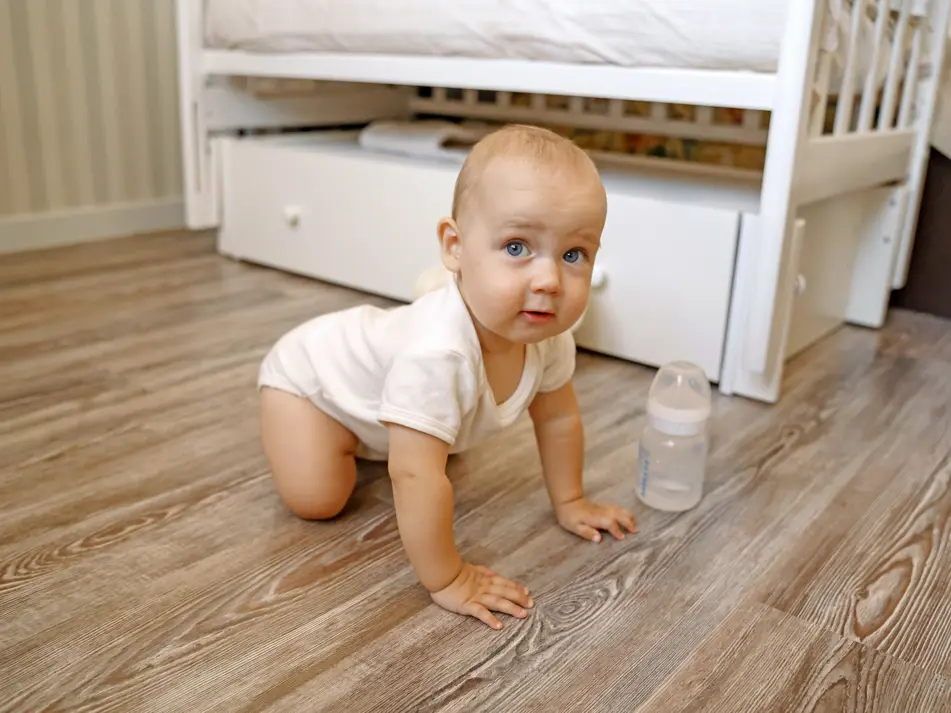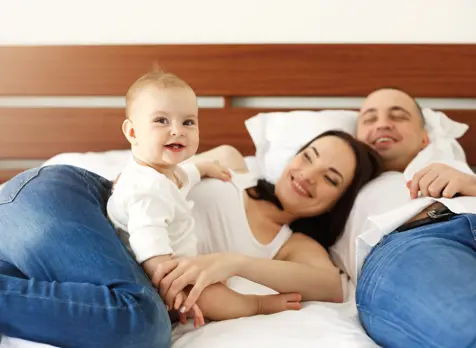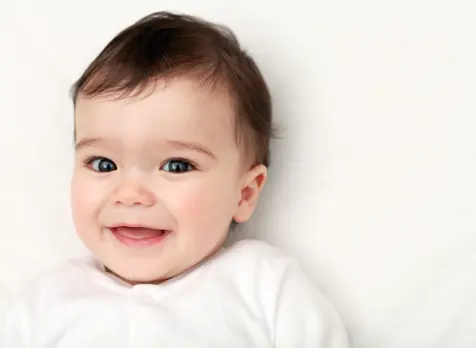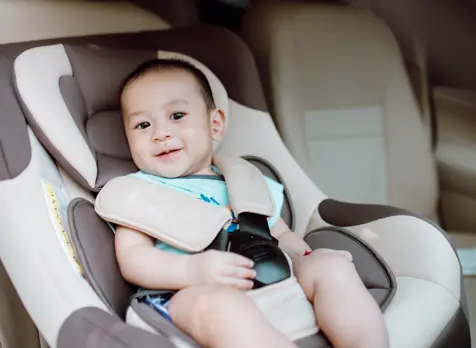Baby Proofing Your Home

It's an exciting step when your baby starts to roll, crawl and move. They're able to explore their surroundings and show a small amount of independence.
However for them to explore safely, we need to create a safe and secure environment. Babies and toddlers are naturally curious which can lead them into potentially dangerous situations.
Baby proofing your home is about reducing the risk in your house as much as possible. When you take a proactive approach, you not only have more peace of mind for yourself but you can also help you child safely explore their world. Here is our baby proofing checklist.
Baby proofing the kitchen
-
1
Install child-resistant cabinet locks to keep children from accessing dangerous items in your cupboards. Make sure any household poisons or medicines aren't stored in a low cupboard. Secure them in a higher cupboard that is at least 1.5 m high and a lock on it.
-
2
Use a safety lock for the oven, cooktop and fridge.
-
3
Never leave your stove unattended. Use stove knob covers and a stove guard to prevent burns and make sure any pots have their handle out of reach.
-
4
Avoid using tablecloths as they can be pulled down.
-
5
Keep small appliances, like toasters and blenders, and sharp objects out of reach.
-
6
Have a bottom drawer assigned to your child, with some plastic containers, lids, saucepan, wood spoon etc, that they learn are the things they can touch in the kitchen.
-
7
Don’t have stools/steps in the kitchen that they can climb up to reach dangerous items.
High Chair Safety
A high chair is designed for your baby to be safely contained when eating. Being at table height allows your baby to be part of family meals. Using a high chair gives them more independence as they start to explore their food and learn to feed themselves.
When buying a high chair make sure:
- It has a strong and sturdy framework.
- The base is wide and stable.
- It has a footrest for your child to feel grounded and stable when experimenting with foods and eating.
- It has a five-point harness that goes over the baby’s shoulders, around their waist and between their legs.
- The backrest is fixed – it needs to remain stable and not move.
- All the locks work and are locked in place when putting your baby in each time you use the high chair.
- There are no moving parts to trap and crush fingers, or sharp edges that could cut your baby.
- If there are wheels or castors on the chair, at least two of the wheels have well functioning brakes.
- The height of a high chair makes it a potential fall hazard, so developing safety habits is essential.
- Always make sure your baby is strapped in.
- Always supervise your baby.
- Make sure you move your baby’s hands, arms and legs out of the way when fitting the tray.
- Do not allow your baby to stand or climb into or out of the high chair.
- Regularly check for broken or loose parts, exposed padding or torn material these can be a choking hazard for your baby.
- Make sure your baby can’t touch or pull on electrical cords, tablecloths, curtains, blinds or cords from the high chair.
- Never allow other children to climb on or play near the high chair.
Baby proofing the living room
-
1
Anchor heavy furniture like bookshelves and TV stands to the wall to prevent tipping.
-
2
Use corner protectors on sharp-edged furniture to cover sharp edges.
-
3
Install outlet covers on all exposed electrical outlets.
-
4
Keep cords for blinds and electronics out of reach or use cord winders that are 1.6m above the floor.
-
5
Remove small objects that can be choking hazards and put them out of reach. This includes any older child's toys or LEGO.
-
6
Use safety gates at the top and bottom of staircases, on the entries to balconies and to prevent your baby entering the kitchen.
Playpen safety
Playpens may help keep your baby safe as they become mobile, when you are busy doing housework or if you have other young children or pets. You might put your baby in the playpen outside with you while you are hanging washing for example, if you have a dog outside with you. Alternatively, you might use the playpen to place potentially dangerous objects in, such as ironing board or a Christmas tree, so that your child cannot reach them.
When buying a playpen make sure:
- It is stable, sturdy and remains rigid when your baby leans over the side so it won’t tip.
- If it has bars, spaces between the bars are no larger than 95 mm, as larger gaps may trap your baby’s head.
- Sides are at least 500 mm high.
- Latches and locks can be locked securely and cannot be undone by your baby.
- It is easy to clean.
- It has a non-toxic finish.
Remember to:
- Always supervise your baby while they are in the playpen.
- Never use a portable cot as a playpen.
- Make sure the playpen is assembled correctly using the manufacturer’s instructions and all latches or locks are secure.
- Place the playpen away from curtains, blinds and stairs.
- Stop using the playpen once your baby can undo the latches or starts to climb.
Baby proofing the bedroom
-
1
Your baby should have their own cot that meets the Australian safety standard and has a firm, well fitted mattress. The space between the bars should be 50-95 mm.
-
2
Make sure hanging cords such as blinds or electrical appliances aren't anywhere near the cot.
-
3
Lock the windows or use window guards. Move chairs and other objects away from the windows.
-
4
Secure heavy furniture to the wall such as the change table and chests of drawers.
-
5
Use electrical outlet covers.
-
6
Avoid using soft bedding like pillows, bumper pads, and stuffed animals in the crib. Learn more about safe sleep.
-
7
Consider a toybox to store your baby's toys. Choose one without a lid, or if there is a lid, choose one that has stoppers on the lid that leave a gap of 12 mm or more when the lid is closed. This will keep your baby’s fingers and hands safe. As with all baby equipment, toy boxes should be placed away from hazardous areas such as windows, stairs and balconies.
Baby toy safety
You will be amazed at the number of toys your baby will accumulate. All toys should meet a mandatory Australian and New Zealand Standard. This standard aims to make toys safe for children aged from 0–36 months.
For specific toys:
- Stuffed toys need to be carefully checked to ensure that all seams are intact and there are no small parts such as eyes or buttons. The toy should also be easily washed.
- If a push or pull toy has a rigid handle, make sure it is well fixed to the toy. Toys with strings or ropes to pull them along can be a risk for strangulation. If it does have a string attached it should be no longer than 220 mm.
- Balloons (including burst balloons) should be kept away from babies. If you want your baby to play with a balloon always closely supervise and never leave unattended. Always tie a knot in the end instead of using a plastic balloon tie.
- Floating devices for use in a pool need to be sturdy. Remember these are not safety devices – babies need to have an adult with them, and be supervised at all times when near or in water.
- Toys that are strung across playpens, prams or strollers with cords, elastic, straps or string should be assembled using the manufacturer’s instructions. Do not string toys across the cot or bassinet as these can be a choking or strangulation risk when you baby is left unattended.
- If you find a toy has become unsafe, throw it out so it no longer poses a risk to your baby. Make sure you destroy the toy to stop it becoming a risk to another young child.
Baby proofing the bathroom
-
1
Store all medications, vitamins, and cleaning products including toilet brushes in a high, locked cabinet.
-
2
Secure your cabinets and even your toilet with locks.
-
3
Place non-slip mats in the bathtub and on the floor.
-
4
Install faucet covers to protect against head injuries while in the bath.
-
5
Never leave a child alone near water, even for a minute. Always make sure your child is within arms reach at all times.
-
6
Get a plumber to make sure the coming out of your bathroom taps is no hotter than 50ºC to avoid burns.
-
7
Keep your bathroom and toilet door closed and locked if possible, when you are not in there.
General baby proofing tips for your home
- Always supervise your child, even in babyproofed areas.
- Learn CPR and basic first aid for infants and children.
- Keep an eye out for recalls and product safety notices.
- Display emergency numbers, including poison control somewhere accessible like on your fridge or in your phone.
- Make sure you have smoke detectors installed in your home.






































